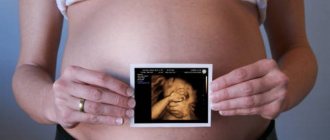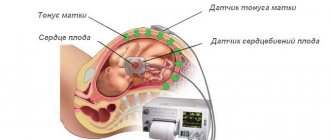In modern medicine, various diagnostic measures are used to identify any pathological process.
One of the most important techniques is fluorography. Thanks to this study, it is possible to identify abnormalities in the lungs and chest, which in the early stages of development can occur without the manifestation of clinical symptoms. The examination is carried out using X-rays, which have a small dose of radiation, which does not pose any threat to human health. However, there are certain restrictions for the procedure. The study is not prescribed for children under the age of majority, as well as for women who are breastfeeding. Fluorography is used with caution during pregnancy. During the menstrual cycle, in some cases the study is contraindicated. However, there are situations when menstruation is not a reason to refuse this diagnostic method.
Definition
Digital scanning fluorograph (the safest and most modern diagnostic method)
Fluorography is an X-ray examination of the chest organs. It is used in our country to detect tuberculous changes in the lungs.
An image obtained with film-type fluorography - 70 mm and 100 mm. In the digital version, large frames are taken on a computer - 2048 x 2048 pixels.
Due to the high prevalence of tuberculosis in our country, fluorography is prescribed for adults and adolescents over 15 years of age. Such screening helps to identify changes in lung tissue at an early stage and begin therapy.
Absolute readings
Fluorography is performed regardless of menstruation if:
- The woman is suspected of pulmonary tuberculosis or any other serious pulmonary disease or neoplasm . In this case, the sooner the fluorography results are received, the sooner treatment can begin.
- The woman had contact with a person who definitely had tuberculosis. If there is an accurate diagnosis, suspicion of infection is natural and, along with specific laboratory tests, fluorography is also performed.
- A woman is constantly in contact with a patient with tuberculosis - a close relative is sick and needs care, for example. Then constant monitoring is the best method of prevention.
- In the area in which the woman lives, an outbreak of tuberculosis has been discovered - then the therapist or TB specialist must insist on a general examination of the entire population and menstruation does not become an obstacle.
Based on the results of fluorography, the doctor makes a conclusion about whether the woman is sick, and if so, sends her for treatment as soon as possible.
Only those who are completely healthy and confident in their abilities can undergo fluorography during menstruation. For everyone else, it is better to wait a week and undergo the procedure later.
Preventive medical examinations are the norm for a modern person who cares about his health. Everyone knows that once a year it is mandatory for every person who has reached the age of majority to undergo a fluorographic examination. In this regard, many women have a question: is it possible to do fluorography during menstruation.
In modern medicine, entire sets of diagnostic procedures have been developed to diagnose each disease. One of the most important is fluorography. It indicates abnormalities in organs located in the chest. Thanks to this examination, it is possible to identify dangerous diseases, many of which develop asymptomatically at the initial stage - pneumonia, tuberculosis, cancer affecting organs in the chest.
The main tool for this examination is X-rays; their dose is very small, so they do not have a negative effect on the body of an adult. The procedure is not prescribed for minors, pregnant or lactating women. As for conducting fluorography for women during menstruation, there are some features and contraindications, and in some cases even critical days are not a reason to refuse the examination.
Is it possible to undergo fluorography during menstruation?
Sometimes the study occurs at the beginning of the menstrual cycle. Common menstrual symptoms include:
- dizziness;
- depression;
- headache;
- dyspepsia (nausea, vomiting, diarrhea, bloating);
- weakness;
- pain in the lower abdomen;
- fainting states.
The stronger the listed symptoms, the less you want to leave the house, let alone go to the clinic. If a woman is feeling unwell, the best choice would be to wait until after her menstrual period to get diagnosed.
There are situations when an X-ray of the lungs is performed. These include:
- suspicion of pulmonary tuberculosis;
- a history of contact with a patient with tuberculosis;
- living in an area where a disease outbreak has been reported;
- treatment of relatives for tuberculosis.
If the disease is not detected in time, it will quickly begin to spread, even leading to an epidemic.
Fluorography when planning pregnancy
The egg, suitable for fertilization in the future menstrual cycle, moves from the ovaries to the uterine cavity during the end of menstruation. If fluorography is done at this time, there is a possibility that this procedure will affect the structure of the egg, make it infertile, or cause abnormalities in the further development of the fetus. Ideally, if a patient is planning to conceive in the near future, she should refrain from undergoing such a medical examination for at least six months before the expected pregnancy.
Contraindications for the study
Experts say that fluorography does not have any effect on menstruation. If a woman is healthy, the beginning of a cycle is not a contraindication to fluorography. But there are pathological conditions in which it is necessary to weigh the pros and cons.
Not all menstrual bleeding is asymptomatic or with minor discomfort. It happens that a girl has to take sick leave because she is unable to go to work or study. In such cases, it is better to refuse fluorography.
When not to conduct research:
- severe, sharp pain in the lower abdomen;
- heavy menstrual bleeding;
- anemia;
- neurological symptoms - sleep disturbances, dizziness, fainting, headache;
- child's age under 15 years;
- period of pregnancy planning (a month or more before the expected conception);
- breast-feeding;
- the period after childbirth until the child reaches 6 months (this is the time for complete restoration of the woman’s organs after the birth of the baby).
When preparing for pregnancy, it is important to undergo all examinations in advance, including fluorography. After all, an extra dose of radiation can disrupt the formation of the follicle, the process of fertilization of the egg. The latter in the fertilized state may not even attach to the wall of the uterus. Thus, pregnancy cannot occur.
Is it possible to carry out diagnostics during a delay?
The absence of menstruation can be both a natural process and a deviation. In particular, this sign may indicate a developing pregnancy or hormonal imbalance, therefore, in order to avoid negative consequences, a woman of reproductive age is recommended to make sure that she is not pregnant. The most accurate result can be obtained by donating blood for hCG. However, this method is not always convenient, since it takes time to obtain results. In this case, you can use a high sensitivity pregnancy test.
Features of fluorography in adolescents
In childhood, X-ray examinations are carried out strictly according to indications. And when a child reaches 15 years of age, according to documents developed by the Ministry of Health, fluorography is performed once every two years for all citizens of our country.
Attention is paid to teenage girls. This period of development is characterized by inferiority of the reproductive and endocrine systems. During menstruation, girls experience more discomfort than adults. Exposure to X-rays during this period of the cycle contributes to changes in hormonal levels and decreased immunity.
Therefore, during intensive development of the body, doctors still recommend refraining from conducting examinations during critical days. In this case, you should consider postponing the study to a later date.
What are X-rays?
The essence of x-ray examination is the ability of electromagnetic radiation to penetrate human tissue, making it possible to obtain their image.
Many internal structures are accessible to him. Radiation carries energy that can interact with each molecule, ionizing it. And although the examination is short-lived, it manages to influence the tissues being studied. The strongest impact occurs on those of them through which the rays pass. But others can also be affected by manipulation. Therefore, many experts doubt whether it is possible to take x-rays during menstruation.
The consequences of radiation can have both immediate and potential manifestations. And although it is considered safe, because the force in the device is minimal, x-rays should not be taken as a simple examination by a doctor. Its appointment and timing is the prerogative of a specialist.
At the same time, some of the women undergoing this study did not inform doctors about their critical days, because no one was interested in this. So is x-ray examination acceptable during menstruation or not? The answer depends on many factors.
We recommend reading the article about the possibility of performing fluorography during menstruation. You will learn about the effectiveness and safety of the examination, the possibility of the procedure during menstruation, and its effect on the fetus during pregnancy.
Fluorography during painful and heavy periods
Each organism is individual, and all processes occur according to different scenarios.
For some, menstruation passes quietly and unnoticed, for others it is accompanied by heavy discharge and terrible painful sensations. These symptoms contribute to a sharp loss of strength and a pronounced decrease in performance. Heavy menstruation can lead to mild anemia, in which fluorography is not performed.
When not to do flurry
Whether it is possible to undergo fluorography should be determined by a specialist in each specific case. If you are in excellent health, X-ray irradiation will not harm a woman even during normal periods. But there are a number of pathologies and conditions in which this diagnostic technique is contraindicated:
- the entire period of menstruation is accompanied by severe pain, which only painkillers can cope with;
- if your periods are too heavy and large dark clots are found in them;
- if a woman feels very weak and overly tired;
- if there are neurological symptoms (headaches, depression, sleep problems, tearfulness, excessive appetite, causeless aggression and irritability);
- if a teenage girl needs fluorography, then it is better to postpone the procedure to a time when she runs out of regulation, so as not to harm the process of formation of the hormonal background and organs of the reproductive system;
- when planning a pregnancy, the egg released from the ovary under the influence of radiation may become infertile, but if fertilization occurs anyway, then there is a high risk that the fetus will develop developmental abnormalities in the future, so experts recommend fluorography six months before the planned conception;
- for women in labor, a fluorographic examination is carried out only six months after the birth of the baby, since the process of childbirth itself is stressful for the body, after which it needs at least 6 months to recover;
- Since irradiation can have a detrimental effect on the composition of breast milk, fluorography is not performed during lactation.
As with any diagnostic method, a woman should prepare in advance for a fluorographic examination. If a woman begins her period on the day appointed for the procedure, it is better to reschedule the examination to another date, when the critical days are over.
Conducting research
Diagnostics does not require special training and is easy to perform:
- A person enters the X-ray room and removes jewelry from the neck, clothing from the waist down, including underwear.
- He approaches the X-ray machine and stands on the stand.
- With your hands on your belt, you need to press your chest tightly against the matrix.
- Then the nurse or laboratory assistant goes into another room.
- The patient is asked to take a deep breath and hold it for a couple of seconds.
- After taking the photo, you can exhale and get dressed.
During X-ray diagnostics in the presence of menstruation, it is advisable to wear a lead apron, which will protect the pelvic organs from exposure to radiation.
If fluorography needs to be done during menstruation, then the preparation is considered to be a reduction in the symptoms that arise during this period. If you have a severe headache, it is better to take a painkiller; if your stomach feels unbearably tight, an antispasmodic will help. These measures will help you relax during the study.
How to prepare for fluorography?
To perform fluorography, no additional preparation is required: just come to the fluorography office, where the doctor will ask you to remove clothes and jewelry above the waist (women with long hair are advised to remove it from their shoulders). After this, the person approaches the device and takes a special position: his chin is on the stand, his hands should be resting on his hips, his chest should be pressed against the screen, his elbows should be spread wide to the sides.
Not everyone knows how to undergo fluorography. The specialist leaves the room and gives a signal when the patient needs to hold his breath. Before this, as a rule, short instructions are given, so the person knows exactly what is happening to him and how to behave. Next, the patient holds his breath for several seconds, during which the image is taken. The entire medical procedure takes no more than five minutes. When it is finished, you can leave the office, and at the appointed time all you have to do is come back for the results.
Is fluorography harmful to health? This is a common question.
A doctor's view of the problem
When a woman asks a specialist whether it is possible to do fluorography during menstruation, the doctor cannot clearly answer. To do this, you need to conduct a thorough examination, research, and possibly take tests. But first of all, everything depends on the woman and her well-being.
During pregnancy and even if it is minimally possible, doctors do not recommend undergoing a preventive x-ray examination. This can lead to the development of structural abnormalities of the fetal organs and to termination of pregnancy.
Fluorography is a screening method that promotes early detection of pathological processes in the lungs and tuberculous changes. As with every examination, fluorography has a number of contraindications described above.
Due to the high prevalence of the disease, it is important for every person to understand the need for frequent testing. The choice of treatment method and the speed of recovery depend on the early detection of a socially dangerous disease. And this affects the health and lives of other people, relatives, children.
During lactation
In addition, if a woman is lactation, this is also a reason to refuse fluorography. Such research may influence the composition of mother's milk.
Any disturbances in the menstrual cycle and functioning of the reproductive system are a reason to play it safe. Unless, of course, there is an urgent need to make such a diagnosis.
We continue to consider the pros and cons of fluorography during menstruation.
When is it recommended to postpone the examination during menstruation?
Let us immediately mention that the period of menstruation almost always occurs differently. For some women, the days mentioned are practically no different from others, and for some, life during this period of time turns into hell. If you rather consider yourself to be in the second group, then you should not additionally load your body. Here are the main reasons to postpone the examination:
- the presence of pain in the abdomen or head;
- weakness or serious illness;
- the appearance of dizziness of unknown origin;
- the presence of copious discharge.
Note! In some cases, menstruation images may be slightly distorted, therefore, taking them in some cases is highly not recommended. This issue must be discussed with a specialist individually; everything will depend on the area being examined and the equipment used.
If your menstrual cycle is delayed, be sure to inform your specialist. Pregnancy is a contraindication for radiography.
Other reasons for deferment
Also, many experts do not recommend X-rays if you have your period for the following reasons:
- At this time, the reproductive system is renewed and restored, and harmful x-ray radiation can negatively affect these processes. The occurrence of bleeding in such cases cannot be ruled out.
- X-ray of the intestines will then be sufficiently informative and accurate when the intestines are completely emptied, and gases accumulate there during menstruation. For this reason, very often there is a need to conduct a repeat study, which has a rather bad effect on the body due to the high radiation exposure.
- The presence of a tampon, which girls always have during menstruation, also often negatively affects the results, distorting the images.
- If the study concerns the fallopian tubes, any formations associated with the uterus, polyps and much more, then the diagnosis will not be sufficiently informative.











